Jose M. Bioucas-Dias
Hyperspectral Image Denoising and Anomaly Detection Based on Low-rank and Sparse Representations
Mar 12, 2021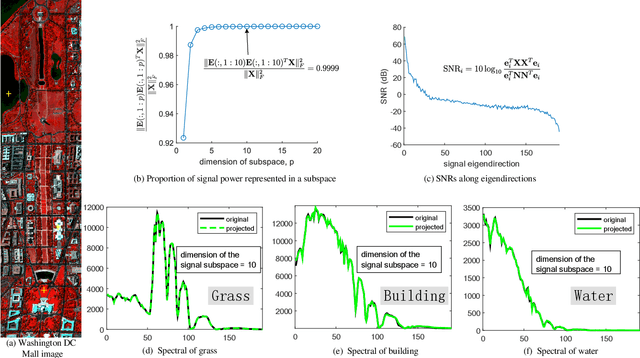
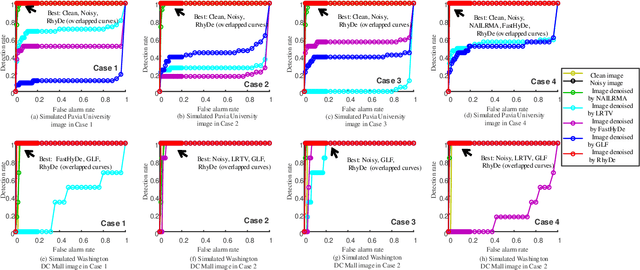
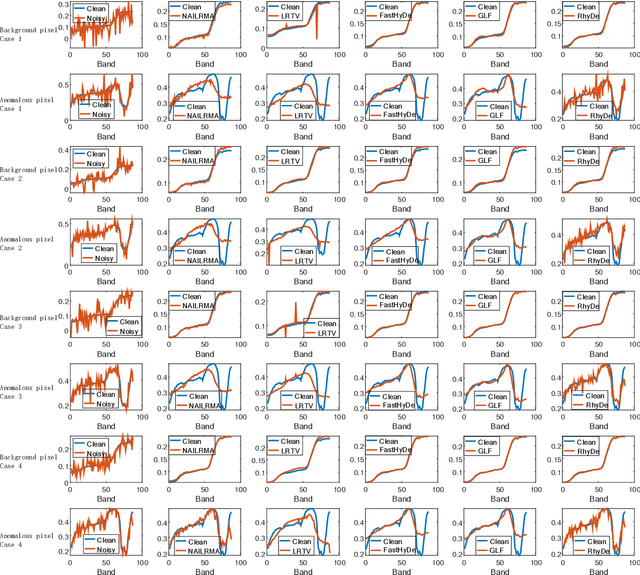
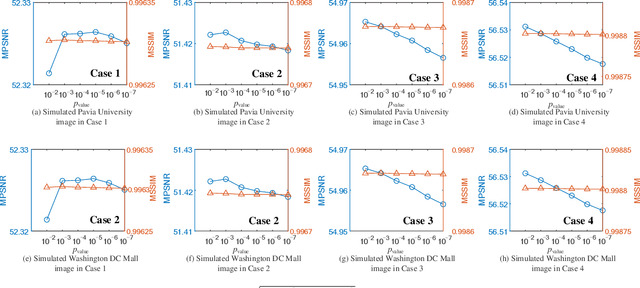
Abstract:Hyperspectral imaging measures the amount of electromagnetic energy across the instantaneous field of view at a very high resolution in hundreds or thousands of spectral channels. This enables objects to be detected and the identification of materials that have subtle differences between them. However, the increase in spectral resolution often means that there is a decrease in the number of photons received in each channel, which means that the noise linked to the image formation process is greater. This degradation limits the quality of the extracted information and its potential applications. Thus, denoising is a fundamental problem in hyperspectral image (HSI) processing. As images of natural scenes with highly correlated spectral channels, HSIs are characterized by a high level of self-similarity and can be well approximated by low-rank representations. These characteristics underlie the state-of-the-art methods used in HSI denoising. However, where there are rarely occurring pixel types, the denoising performance of these methods is not optimal, and the subsequent detection of these pixels may be compromised. To address these hurdles, in this article, we introduce RhyDe (Robust hyperspectral Denoising), a powerful HSI denoiser, which implements explicit low-rank representation, promotes self-similarity, and, by using a form of collaborative sparsity, preserves rare pixels. The denoising and detection effectiveness of the proposed robust HSI denoiser is illustrated using semireal and real data.
Fast Hyperspectral Image Denoising and Inpainting Based on Low-Rank and Sparse Representations
Mar 11, 2021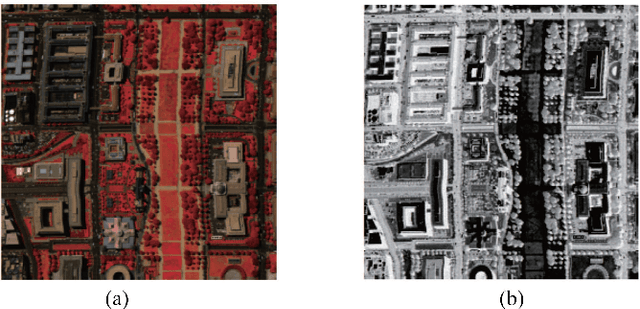
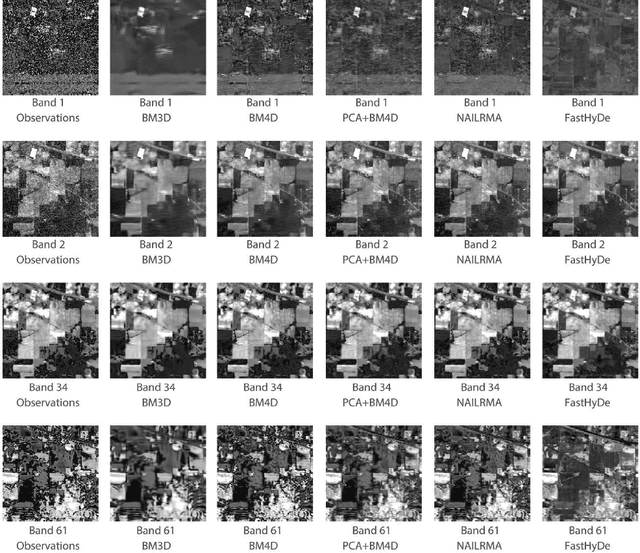
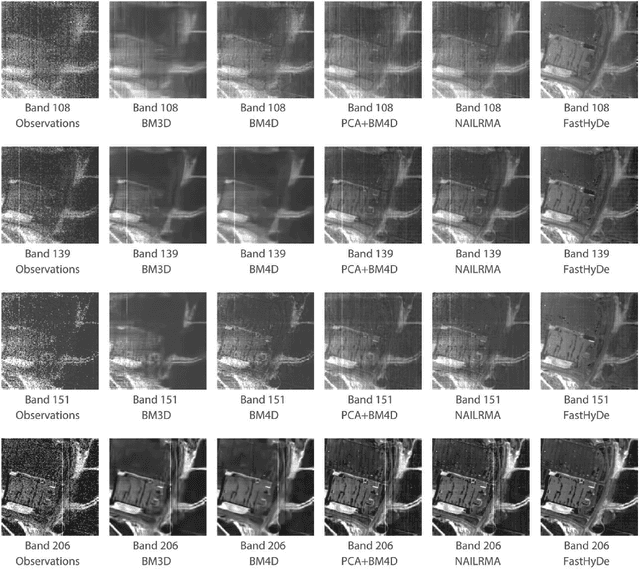
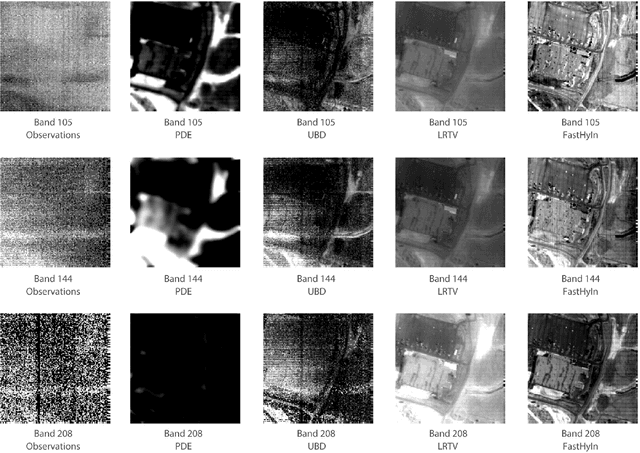
Abstract:This paper introduces two very fast and competitive hyperspectral image (HSI) restoration algorithms: fast hyperspectral denoising (FastHyDe), a denoising algorithm able to cope with Gaussian and Poissonian noise, and fast hyperspectral inpainting (FastHyIn), an inpainting algorithm to restore HSIs where some observations from known pixels in some known bands are missing. FastHyDe and FastHyIn fully exploit extremely compact and sparse HSI representations linked with their low-rank and self-similarity characteristics. In a series of experiments with simulated and real data, the newly introduced FastHyDe and FastHyIn compete with the state-of-the-art methods, with much lower computational complexity.
Image Restoration Using Conditional Random Fields and Scale Mixtures of Gaussians
Jul 09, 2018



Abstract:This paper proposes a general framework for internal patch-based image restoration based on Conditional Random Fields (CRF). Unlike related models based on Markov Random Fields (MRF), our approach explicitly formulates the posterior distribution for the entire image. The potential functions are taken as proportional to the product of a likelihood and prior for each patch. By assuming identical parameters for similar patches, our approach can be classified as a model-based non-local method. For the prior term in the potential function of the CRF model, multivariate Gaussians and multivariate scale-mixture of Gaussians are considered, with the latter being a novel prior for image patches. Our results show that the proposed approach outperforms methods based on Gaussian mixture models for image denoising and state-of-the-art methods for image interpolation/inpainting.
External Patch-Based Image Restoration Using Importance Sampling
Jul 09, 2018



Abstract:This paper introduces a new approach to patch-based image restoration based on external datasets and importance sampling. The Minimum Mean Squared Error (MMSE) estimate of the image patches, the computation of which requires solving a multidimensional (typically intractable) integral, is approximated using samples from an external dataset. The new method, which can be interpreted as a generalization of the external non-local means (NLM), uses self-normalized importance sampling to efficiently approximate the MMSE estimates. The use of self-normalized importance sampling endows the proposed method with great flexibility, namely regarding the statistical properties of the measurement noise. The effectiveness of the proposed method is shown in a series of experiments using both generic large-scale and class-specific external datasets.
Class-specific image denoising using importance sampling
Jun 21, 2017


Abstract:In this paper, we propose a new image denoising method, tailored to specific classes of images, assuming that a dataset of clean images of the same class is available. Similarly to the non-local means (NLM) algorithm, the proposed method computes a weighted average of non-local patches, which we interpret under the importance sampling framework. This viewpoint introduces flexibility regarding the adopted priors, the noise statistics, and the computation of Bayesian estimates. The importance sampling viewpoint is exploited to approximate the minimum mean squared error (MMSE) patch estimates, using the true underlying prior on image patches. The estimates thus obtained converge to the true MMSE estimates, as the number of samples approaches infinity. Experimental results provide evidence that the proposed denoiser outperforms the state-of-the-art in the specific classes of face and text images.
Class-specific Poisson denoising by patch-based importance sampling
Jun 09, 2017


Abstract:In this paper, we address the problem of recovering images degraded by Poisson noise, where the image is known to belong to a specific class. In the proposed method, a dataset of clean patches from images of the class of interest is clustered using multivariate Gaussian distributions. In order to recover the noisy image, each noisy patch is assigned to one of these distributions, and the corresponding minimum mean squared error (MMSE) estimate is obtained. We propose to use a self-normalized importance sampling approach, which is a method of the Monte-Carlo family, for the both determining the most likely distribution and approximating the MMSE estimate of the clean patch. Experimental results shows that our proposed method outperforms other methods for Poisson denoising at a low SNR regime.
 Add to Chrome
Add to Chrome Add to Firefox
Add to Firefox Add to Edge
Add to Edge